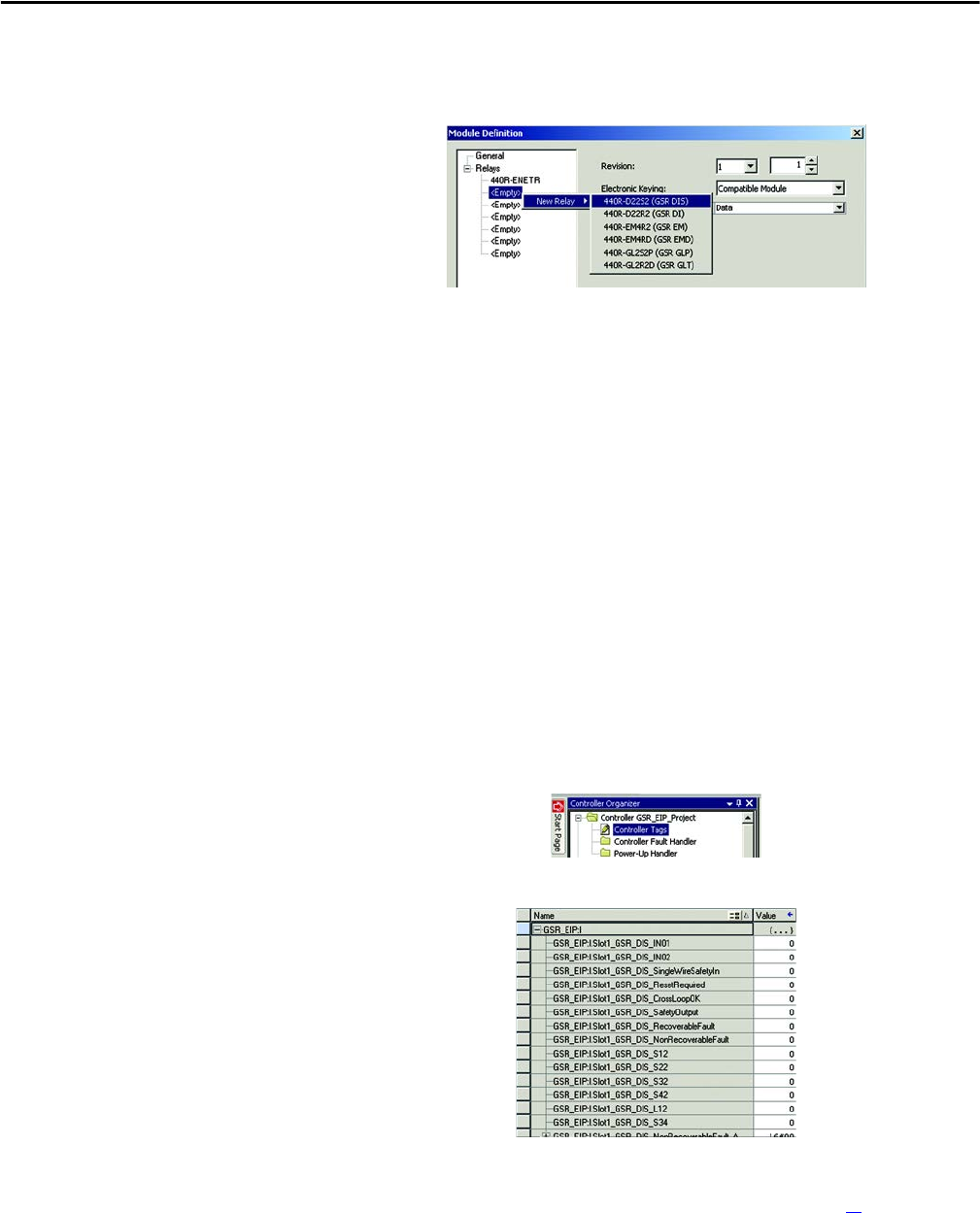User Manual Owner's manual
Table Of Contents
- Important User Information
- Preface
- Table of Contents
- About the Interface
- Overview
- Important Interface Considerations
- About the Interface
- Interface Features
- What the Interface Does
- Hardware/Software Compatibility
- Use of the Common Industrial Protocol (CIP)
- Understand the Producer/ Consumer Model
- Specify the Requested Packet Interval (RPI)
- Support of Data Connections
- Chapter Summary
- Install a Guardmaster EtherNet/IP Network Interface
- Configure the Interface for Your EtherNet/ IP Network
- Automation Controller Communications
- Troubleshoot the Interface
- EtherNet/IP Network Interface Specifications
- Interface Web Dialogs
- Configure the RSLinx Ethernet Communication Driver
- Tag Definitions

32 Rockwell Automation Publication 440R-UM009B-EN-P - February 2014
Chapter 4 Automation Controller Communications
6. Right-click on an <Empty Slot> in the Module Definition dialog box and
select the Guardmaster Safety Relay that is physically located in that slot
position next to the Guardmaster EtherNet/IP network interface.
Note: Empty slots between Guardmaster Safety Relays are not supported
by the Guardmaster EtherNet/IP network interface at run-time. Your
configuration must represent the actual Safety Relays present beginning
with the first slot and without any empty slots.
7. Once all Guardmaster Safety Relays monitored by the Guardmaster
EtherNet/IP network interface have been added, Click OK.
8. Click OK at the next window to have RSLogix 5000 create the predefined
tags. The Guardmaster EtherNet/IP network interface will now show as a
module in the I/O Configuration folder.
Accessing Module Data with Add-on Profiles
With both the Logix controller and the EtherNet/IP network configured, the
Logix controller can exchange data with the Guardmaster EtherNet/IP network
interface.
1. Open the Controller tags window.
2. Select the Monitor Tags tab.
In the previous example, predefined input tags were created for the GSR
DIS module in slot 1 of the configuration. For detailed information on the
individual tag members and their meaning, see Appendix D
.










